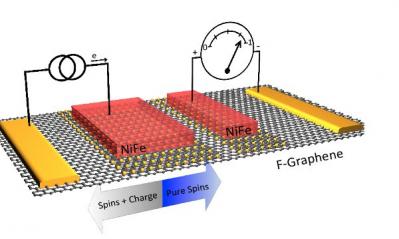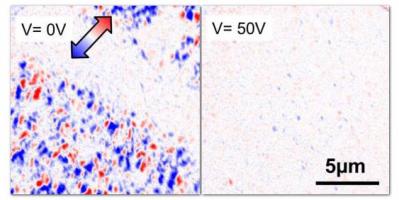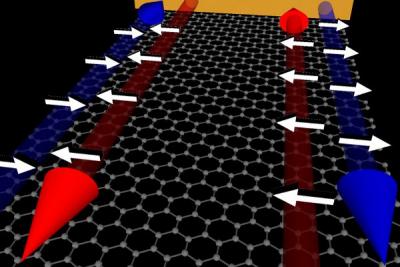NRL scientists report the highest spin injection values yet measured for graphene
Researchers from the US Naval Research Laboratory (NRL) developed a new type of tunnel device structure in which both the tunnel barrier and transport channel are made from graphene. The researchers say that this device features the highest spin injection values yet measured for graphene, and this design could pave they way towards highly functional and scalable graphene electronic and spintronic devices.

The tunnel barrier is made from dilutely fluorinated graphene while the charge and transport layer is made from graphene. The researcher demonstrated tunnel injection through the fluorinated graphene, and lateral transport and electrical detection of pure spin current in the graphene channel.

